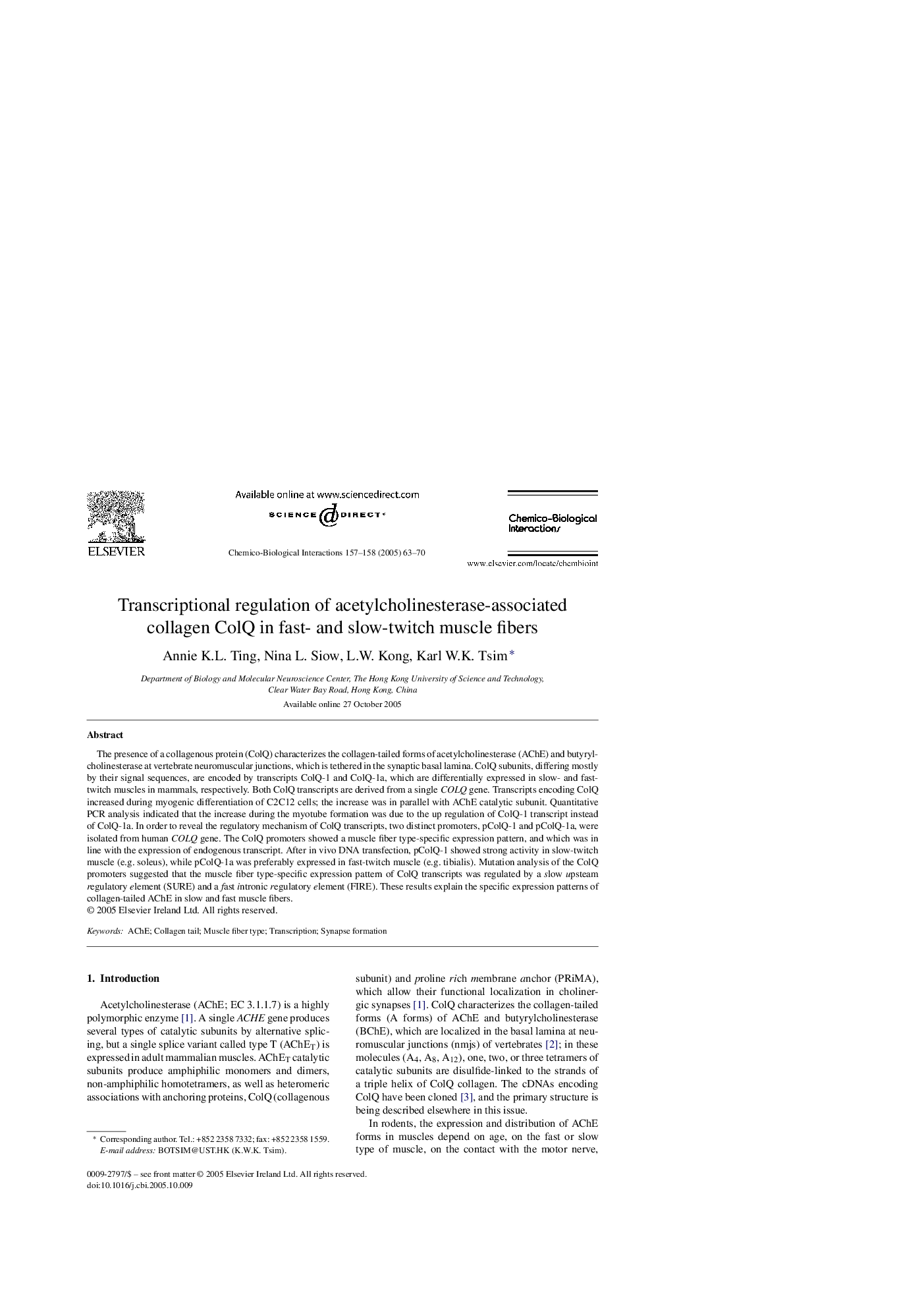| Article ID | Journal | Published Year | Pages | File Type |
|---|---|---|---|---|
| 9028066 | Chemico-Biological Interactions | 2005 | 8 Pages |
Abstract
The presence of a collagenous protein (ColQ) characterizes the collagen-tailed forms of acetylcholinesterase (AChE) and butyrylcholinesterase at vertebrate neuromuscular junctions, which is tethered in the synaptic basal lamina. ColQ subunits, differing mostly by their signal sequences, are encoded by transcripts ColQ-1 and ColQ-1a, which are differentially expressed in slow- and fast-twitch muscles in mammals, respectively. Both ColQ transcripts are derived from a single COLQ gene. Transcripts encoding ColQ increased during myogenic differentiation of C2C12 cells; the increase was in parallel with AChE catalytic subunit. Quantitative PCR analysis indicated that the increase during the myotube formation was due to the up regulation of ColQ-1 transcript instead of ColQ-1a. In order to reveal the regulatory mechanism of ColQ transcripts, two distinct promoters, pColQ-1 and pColQ-1a, were isolated from human COLQ gene. The ColQ promoters showed a muscle fiber type-specific expression pattern, and which was in line with the expression of endogenous transcript. After in vivo DNA transfection, pColQ-1 showed strong activity in slow-twitch muscle (e.g. soleus), while pColQ-1a was preferably expressed in fast-twitch muscle (e.g. tibialis). Mutation analysis of the ColQ promoters suggested that the muscle fiber type-specific expression pattern of ColQ transcripts was regulated by a slow upsteam regulatory element (SURE) and a fast intronic regulatory element (FIRE). These results explain the specific expression patterns of collagen-tailed AChE in slow and fast muscle fibers.
Related Topics
Life Sciences
Environmental Science
Health, Toxicology and Mutagenesis
Authors
Annie K.L. Ting, Nina L. Siow, L.W. Kong, Karl W.K. Tsim,
